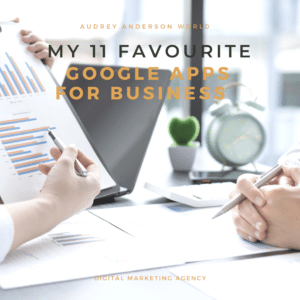
Lash Serums That Work My Favorite – 2023 Review
Lash Serums That Work and are my favourite – A Review We may get paid a commission if you buy something after clicking on one of our affiliate links here

You probably think of grand strategies and epic campaigns when social media marketing. You think of big budgets and authoritative voices. But, you probably don’t think of yourself, your friend, or your family member.
But what if you could become a master social media marketer without paying $50,000 a year for a marketing degree? What if you could get started with social media strategy without technical knowledge, business objectives, and a social media marketing plan? And what if you could follow a virtual guide to marketing success?
Let us begin this journey to social media marketing mastery. Keep reading. You’re about to discover why and how you should get started with a social media marketing strategy—looking at the bigger picture.
Advertising on social networking sites, such as TikTok, YouTube, Facebook and Twitter, is SNS marketing, with millions of active monthly users.
Advertisers use social networking sites (SNS Platforms) to promote products or services. There are various ways people or businesses market their products and services on these platforms, such as TikTok, YouTube and Facebook. This blog post hopes to shine some light on this for individuals or Brands.
First, SNS platforms are a great way to market products or services. These platforms have millions of users. They are a great platform to advertise. The user base is quite large, and these websites’ content is also excellent. The users have created videos, photos and other content that are easy to use for marketing purposes.
The second benefit of using an SNS platform for marketing is that the content created by the users is not dull. On the contrary, it is more interesting than most of what you will see in traditional advertising media (TV, radio etc.). In fact, it can be very entertaining!
Using this type of content for marketing purposes will probably be better received by your target audience than traditional advertising media. And since there are many people on social networking sites, your message will reach a larger audience than if you were using conventional advertising media like TV or radio.
Another benefit of using social networking sites for marketing purposes is that they allow you.
The first step to social media marketing is building a social media presence for your business. What does that mean, exactly? First, audit all your social media accounts on each social media platform.
On each account, you need to set up a profile picture, a business name, and any other information you’d like to be easily identifiable to your target audience.
A SaaS business might have an account on Instagram, LinkedIn, and Twitter, each with your company logo profile picture. At the same time, an Ecommerce business might only use Instagram, Facebook, TikTok.
Once your social media accounts are set up, you have several options. You can use each account to promote your business. You are utilising each of these different platforms to build an audience and personal brand. Or, you can use each account to capture leads.
Some social media platforms are better for generating leads than others. For example, if you own a real estate brokerage, you want to focus on building a presence on social media platforms that facilitate leads. But if you own a boutique hotel, you want to focus on building a presence on platforms that allow you to generate brand awareness.


A glance at some social media marketing stats proves that it is a powerful marketing tool:
Step 1: Outline your Brands Goals, Social Media marketing plan.
Step 2: Set a Social Media Budget before starting your Social Media Campaign.
Step 3: Social Media Content IdeasCreate Content Your Followers Love
Step 4: Automate to Maximise Your Time & Performance, Social Media Content Calendar
Step 5: Be Consistent
Step 6: Monitoring Analytics to Improve Your Performance
Step 7: Know what KPIs you will measure used to measure your Social.
Step 8: Understanding that Engagement Is a Two-Way Street
Step 9. Grow a Quality Following
Step 10: Leverage Paid Social Media
Step 11: Boost Posts to Maximise Returns
Step 12: Increase Customer Lifetime Value
Step 13: Turn Social Media Platform Engagement Into Revenues
Social media advertising/marketing is a broad and ever-changing topic. My goal is not to overwhelm you. In this comprehensive guide on social media marketing, we’ll break down the top strategies for success. Then, we’ll look at each strategy in-depth to help you understand how it works and how you can implement it. But first, let’s start by reviewing the main goals of social media marketing.

The five primary objectives of any brand:
My Tip is to ask yourself what you want to accomplish through branding (social media strategy) before settling on a goal for your company’s image. For example, what problems do your goods or services solve to entice consumers to buy specifically?
Your media marketing strategy will set benchmarks for the overall marketing spend.
In general, the entire marketing expenditure differs based on whether you’re promoting to customers or other businesses: (D2C or B2B – marketing personas)
An analysis of this same data shows the typical annual marketing spending for each business size:
Benchmarks for social media strategy budgets can be found here.
Before publishing a single piece of content to your social media accounts, you need to plan out your social media calendar.
What are the social media platforms you want to use? When should you publish content? What type of content should you post? These are essential questions, and without a social media calendar, you’ll never know the answers. Facebook Meta has suggestions for the best times to post based on your followers. I would consider scheduling your Social Media Marketing and testing those recommended times.
Utilising a social media calendar dramatically assists you in creating a consistent social media presence by providing you with the answers to these questions. It can also help you avoid the most common social media mistakes.
Now that you know your Marketing Personas ( target audience ), you’re ready to build your social media strategy. Your first step is to create and publish content.
What does that actually mean? First, you need to create social media content for your accounts. This could range from photos to videos to blog posts.
Here are five social media content ideas for good client interaction: Keeping up with the newest social media trends, identifying hot subjects your audience is talking about, using hashtags, and sharing entertaining and relevant information regularly is the key to engaging your audience.
Social Media Content Ideas to Keep in Mind
The type of material you intend to post on each of your chosen social media platforms will need to be determined once you’ve narrowed down your social media marketing platforms.
Different forms of material appeal to and engage differently with other people. Therefore it is crucial to experiment and learn what works and doesn’t. Eventually, you’ll discover which types of content perform the best and attract the most attention. You will also figure out what forms of content correspond with your business’ marketing goals and objectives.
And once you’ve created your content, you need to publish it. Publish it to your social media channels, using your voice from earlier and your social media calendar to ensure that you stick to your publishing schedule. See below for recommended tools for social media management.
Once you’ve created a social media calendar and started to build a social media presence for your business, it’s time to scale your efforts. This is where Automation comes in.
Several tools and services allow you to automate your social media marketing efforts. For example, you can use tools that automatically publish content to your social media accounts based on a schedule you create. Or you can use tools that automatically engage with and respond to comments and posts made by your followers.
My recommended social media management solutions ( you can use to automate your social media marketing efforts. In 2022, these will be my go-to social media posting and scheduling tools:
1. Loomly
Loomly, After a free 15-day trial with no credit card required, it offers four pricing options. A $20/month base plan is available for people with ten social media profiles or fewer, while a $228/month Premium Plan may accommodate up to 26 users and 60 social media profiles.
Loomly’s calendar workflows function is one of its many advantages. For teams with more than one collaborator, the default setting is:
A draught that has not yet been approved requires edits to be approved before it can be scheduled for publication.
When writing a post, there is a simple procedure to follow. You may start from scratch or use RSS feeds that automatically generate article ideas to create a post. However, before you can tailor a post to a particular social media platform, you must first produce a draught of the post. Loomly gives you complete control over who sees your ad and how much money you’re willing to spend when creating a paid Facebook post.
Loomly’s interaction panel is another handy feature, allowing you to manage comments, messages, and social media mentions (through tagging).
2. Sendible
Sendible claims to be “The #1 Social Media Management Tool for Agencies” on its website. While its most popular plan is the $199 Medium Plan – “For Growing Agencies,” it also offers a $29 Micro Plan for solopreneurs, a $99 Small Plan for small firms, and a $299 Large Plan for large teams, in addition to the $199 Medium Plan.
If you have a blog on these platforms, you can post straight to your site from the app. Sendible’s geo-targeting features allow you to target specific groups of people. Uploading videos to Twitter, Facebook, and YouTube are made easier using Sendible.
Sendible has a dashboard and tools for publishing, collaboration, analytics, CRM, listening, and mobile.
Using their advanced compose box, you can plan, schedule, and publish posts, photographs, and videos to many social networks at once. You can schedule posts, photos, and videos individually or in bulk on social networking platforms. In addition, Sendible allows you to repeat your most popular material to keep your social media channel accounts updated. You see your information in the form of a calendar that everyone can see.
Canva integration is an excellent service that helps you create better-performing visual content.
Online marketing requires consistency. Consistency is necessary to build brand recognition. Consistency in branding increases audience engagement and reach. From your messaging tone to your profile design, you need to stand out to your target demographic.
To be consistent in your social media messaging tone, you must first identify who you are messaging. For example, speaking to millennials is not the same as talking to baby boomers. Age, geography, gender, interests, and goals all segment people into groups, and understanding which group you’re speaking to helps you adopt a tone of voice they’ll understand.
People can identify your voice online the same way they recognise your friend’s voice when they say “hello” on the phone. So be faithful to your Brand to establish a loyal audience and social media following.
Content Consistency
You display what you know and talk about what matters to your audience. The goal is, to be honest. “You need to create content that makes me cry, laugh, or surprises/provokes me,” says Facebook Blueprint Creative Best Practices. You want your audience to respond, to engage with the material you develop and share naturally.
Your Brand’s posts should be factual and ethical in content, so make sure the news you publish is correct and in line with your Brand’s ethos.
Regular Posting Routine
Post material under moderation. Once you’ve established a posting schedule that works for you, stick to it. A publishing schedule provides consistency in both timing and content. Plan each day’s posts for each social media channel and keep to it.
Post daily on social media. Organic reach, or the number of individuals reached without paying to enhance an advertisement or post, is limited.
Once you publish content, it’s time to monitor and analyse results. This is where you’ll use tools like Google Analytics to monitor your social media results. It would be best to stand out from various competitors, social media noise, and even compete with influencers, celebrities, and other significant names.
You’ll adjust your social media calendar to keep your Brand at the top of your target audience’s mind. And you’ll continue to perform keyword research to help you find new opportunities for promoting your business on social media.
Focus #1: Engagement
Engagement is the essential factor to consider in social media advertising. It drives all of the other social media KPIs we’ll discuss.
Engagement is the number of likes, shares, and comments on your social media posts.
Focus #2: Reach
Reach is an essential old-school marketing statistic. It shows how

Aids Human Connection
A two-way discussion connects brands and consumers directly, unlike a one-way conversation where a firm dominates the narrative and ignores visitors/followers. A two-conversation is a discussion in which brands communicate and listen to their audience.
Get Realistic Insights
Whether you are a SaaS provider or a freelancer, regularly monitoring your social media accounts can give you much information.
Love it or hate it, individuals express themselves on social media, which goes well beyond their day. They discuss brands, people, companies, and products.
Join Existing Conversations
You don’t want your company to chat all day. But on the other hand, consumers like and share your material, ask questions, leave comments, and even complain.
You can’t ignore lousy engagement on your social media pages. How else will you mend your relationship?
Repeat steps 1 through to 8.
Paid social media campaigns/ads can help compensate for lesser organic reach and interaction on social media. Combining organic and sponsored social media may increase brand exposure, drive new customers into the funnel, and increase customer retention.
A survey by SocialMediaExaminer found that marketers feel long-term efforts are more effective than short-term ones. According to a new study over five years of social media marketing, 66 per cent of marketers predict that sales will increase.
Also, the study indicated that long-term use of social media can boost traffic and customer loyalty, but not in the near run.
The most important takeaways for why Brands need to use Social Media Marketing. Long-term social media participation can drive sales and customer loyalty, but marketers must realise that it will not be immediately repaid for their efforts in the short run.
Why Boost a Post?
1. To reach your target audience at a low cost.
This way, you’re not wasting money on those who won’t benefit from your product or service.
2. To raise platform brand awareness.
Repetition and compelling content can help establish your brand’s identity. In addition, brand recognition can be increased by boosting posts on popular social media networks.
3. To collect data for your marketing plan.
You can track the traffic, interaction, and demographics for each post you boost on each network. Then, take note of the best-performing posts and build on them for future marketing campaigns.
Social media is a fun and engaging way to build your brand and expand your customer base. It can also be a tremendous source of leads and sales.
This social network guide involves many moving parts, as this article shows.
That being said, it doesn’t have to be a hassle to put a plan together.
Your social media marketing strategy will be good if you follow the outlined procedures and set measurable targets.
You can also contact me if you want some ideas on implementing these tactics in practice. Wishing you all the best!
Obtaining new clients by reaching out to them, guiding them through a marketing funnel, and onboarding them is costly.
Buying habits of existing consumers
Selling to a current customer is 60-70 per cent likely, but selling to a new customer is only 5-20 per cent likely. Moreover, a 5% increase in client retention improves earnings by 25-95 per cent.
Surprisingly, though, 50% of businesses prioritise client acquisition over customer retention, a significant disparity. As you can see from the given data, Customer Lifetime Value is a critical underutilised metric.
Get updated with the latest news about our company’s achievements and activities

Lash Serums That Work and are my favourite – A Review We may get paid a commission if you buy something after clicking on one of our affiliate links here

Rodan and Fields Consultant + Rodan and Fields Find a Consultant Should I join the Rodan Fields Consultant Program? EVERYTHING YOU NEED TO KNOW ABOUT BECOMING A CONSULTANT FOR RODAN

The best sunscreens The Best Sunscreens – so you can be sure you’re getting the best protection possible. AAW Your ultimate guide to the Best sunscreens CHICHI KAWA – Summer

My best hair care products We may get paid a commission if you buy something after clicking on one of our affiliate links here on the site on the best

Retinaldehyde The Ultimate Guide to Retinaldehyde – the Older Sister of Retinol: The type of retinoid you use matters if you are looking for a retinoid to treat acne, premature

My 11 Favorite Google Apps For Business If you haven’t already, I invite you to check out the G Suite platform for your business and my Favourite Google Apps For
